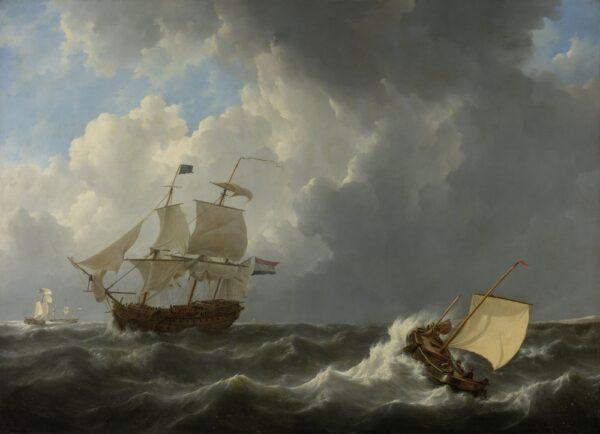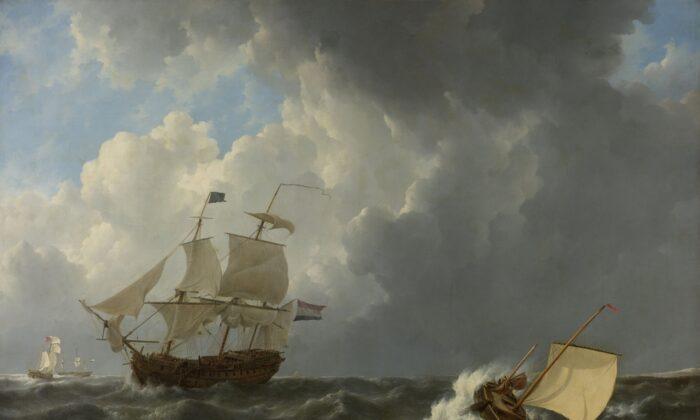There is a seasickness that is more like a spell than a sickness. It is a yearning, a calling, a burning whereby people seek to break free of the finite and sail out into the boundless by the illimitable analogy that the sea is.

That sea has beckoned land dwellers to live out their lives as tossing toys upon its heaving back—or beneath it, as the case may be. That sea, with its famous depth of majesty and mystery, is well-known by any who have crested the foamy currents or stood on a crashing shore. We are creatures of earth, but we long for the sea.
The poetry of the sea is as vast as the watery part of the world itself, and giants of this genre include Tennyson’s Ulysses sailing “beyond the sunset,” Wordsworth’s vision of Proteus rising from the sea as he hears “old Triton blow his wreathéd horn,” Poe’s “weary, way-worn wanderer” in “To Helen,” and perhaps most famously, Coleridge’s gallant crew of the living dead in the epic “Rime of the Ancient Mariner.”

“I must down to the seas again, to the lonely sea and the sky, And all I ask is a tall ship and a star to steer her by; And the wheel’s kick and the wind’s song and the white sail’s shaking, And a grey mist on the sea’s face, and a grey dawn breaking.
I must down to the seas again, for the call of the running tide Is a wild call and a clear call that may not be denied; And all I ask is a windy day with the white clouds flying, And the flung spray and the blown spume, and the sea-gulls crying.
I must down to the seas again, to the vagrant gypsy life, To the gull’s way and the whale’s way where the wind’s like a whetted knife; And all I ask is a merry yarn from a laughing fellow-rover, And quiet sleep and a sweet dream when the long trick’s over.”

And so are we all urged to go down to the sea again, for one reason or another. We seek the embrace of something eternal in our smallness, our loneliness, curiosity, or wanderlust. And the sea is the living infinite, bringing the lackluster back to life, like Melville’s philosopher, Ishmael, or Kipling’s snob, Harvey Cheyne Jr. Both of these characters found the zest of existence in the sea and may well have spoken the words of Masefield in their feverish and fervent ardor. As Tommy Makem of the Clancy Brothers in his song “Farewell to Carlingford” phrased it, “But when the sea gets in your blood, when she calls you must obey!”

The allure of the sea is embedded in the songs, stories, and poetry of roving souls, and Masefield’s clipping contribution to this mighty canon is particularly vivifying and liberating in its tone. “Sea Fever” smacks of the optimism and excitement of a salty wind and a fine challenge. It whistles with the air of a happy-go-lucky heart. It bears in its brief verses the appreciation of hard work, the thrill of new discovery, and the awe of creation from weather to whales.
“The deep calleth unto the deep,” as the Psalmist says, and both readers and sailors suddenly comprehend a depth about themselves and the wide world in the act of encountering even the surface of those secret realms inviting exploration, promising adventure, and providing intrigue.

Again, like the experience of the sea, the experience of poems like “Sea Fever” is moving. It speaks to those who have been in some fashion or another moved by the living beauty of the waters or terrified by the livid brutality of the waves. The seduction of the sea woos the wildest men, and the poetry of the sea pulses beyond the unfathomable depths to flood hearts with a longing for the unknown and a lunging toward adventure.





